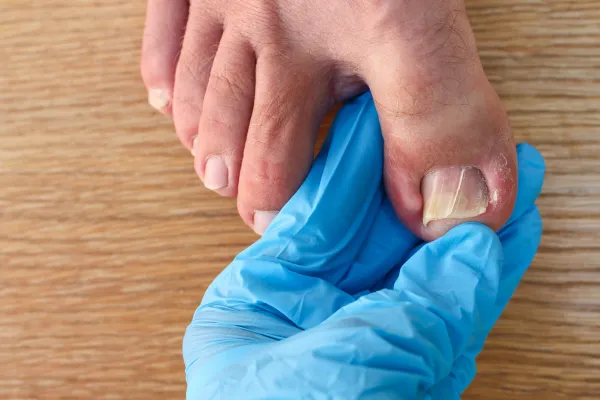Tips & Advice From Foot & Ankle Associates of Southern NH

Walking Comfortably Again: Solutions for Ingrown Toenails
At Foot & Ankle Associates of Southern NH, we understand the frustration and pain ingrown toenails can cause. Simple walks can become agonizing experiences, and even wearing shoes feels like a constant battle. In this blog post, we'll explore the causes of ingrown toenails, delve into the various treatment options available, and empower you with the knowledge to walk comfortably again.
Understanding the Ingrown Toenail:
An ingrown toenail occurs when the corner or side of your nail digs into the surrounding skin. This can happen for several reasons, including:
Improper nail trimming (cutting too short or at an angle)
Tight-fitting shoes
Trauma to the toe
Certain foot conditions (e.g., bunions)
Genetics
Signs and Symptoms:
If you suspect you have an ingrown toenail, be on the lookout for these symptoms:
Pain and tenderness around the affected toe
Redness, swelling, and inflammation
Pus drainage
Difficulty wearing shoes
Home Care for Mild Cases:
Here are some steps you can take at home to alleviate discomfort in mild cases:
Soak your feet: Warm salt water soaks can help reduce inflammation and soften the nail. Aim for 15-20 minute soaks, 2-3 times a day.
Apply gentle pressure: After soaking, gently try to nudge the corner of the nail away from the skin with a cotton swab. Don't attempt to dig or cut under the nail.
Wear loose-fitting shoes: Opt for open-toed sandals or shoes with a roomy toe box to avoid further pressure.
Over-the-counter pain relievers: Medications like ibuprofen or acetaminophen can help manage pain.
When to See a Podiatrist:
If home remedies aren't providing relief, the ingrown toenail is severe, or you experience signs of infection (increased pain, redness, pus), it's crucial to seek professional help. At Foot & Ankle Associates of Southern NH, our podiatrists offer a range of solutions to address your specific needs. These may include:
Partial nail trimming: The podiatrist will numb the area and carefully remove the ingrown portion of the nail.
Nail bracing: A special device is applied to help lift the nail and prevent it from digging into the skin.
Antibiotics: If an infection is present, oral or topical antibiotics may be prescribed.
Surgical removal: In some cases, complete or partial nail removal may be necessary.
Preventing Future Woes:
Once your ingrown toenail is treated, here are some tips to prevent them from returning:
Trim your nails straight across: Avoid cutting them too short or at an angle.
Wear properly fitting shoes: Opt for shoes that offer ample space for your toes.
Maintain good foot hygiene: Wash and dry your feet thoroughly daily.
Foot & Ankle Associates of Southern NH: Your Partners in Foot Health
Don't let an ingrown toenail hold you back from enjoying life! At Foot & Ankle Associates of Southern NH, our team of podiatrists is dedicated to providing comprehensive care for all your foot and ankle needs. We offer a comfortable environment, advanced technologies, and personalized treatment plans to get you back on your feet – pain-free!
Contact us today to schedule an appointment and start your journey towards healthy, comfortable feet. Remember, at Foot & Ankle Associates of Southern NH, your wellness journey begins!
Ask Foot & Ankle Associates of Southern NH And Their Team
Fill in the form to request a call from our team. One of our team members will call you for FREE and answer any questions or concerns you may have about your condition
Where To Find Foot & Ankle Associates of Southern NH

If you have any questions before scheduling an appointment or for general inquiries, please use the contact us button below. Our team will promptly reach out to assist you.
Opening Hours
Monday: 8:00am – 5:00pm
Tuesday: 8:00am – 5:00pm
Wednesday: 8:00am – 2:00pm
Thursday: 8:00am – 5:00pm
Friday: 8:00am – 2:00pm
Saturday: Closed
Sunday: Closed

